I’m not a veterinarian, and this is based on my own research, experience, and nutritional advice from my vet. This is in no way intended to be a detailed instructional guide on what to feed your furry friends. Please do your own research prior to changing diets and consult with a professional in pet nutrition.
I’m going to start off by saying that this is a touchy subject, with some not-so-fun to read content. Pet parents, much like the regular kind of parents, are passionately protective and invested in their animals. As they should be. However, this often means extremely strong feelings and opinions towards things that relate to their pet – i.e. nutrition, and emotional responses to opinions that differ from our own. We all want what’s best for our furry babies, and this is what I feel is best for mine, not yours.
Just because this is what *I* do and why I do it, does not mean you love your own dog any less. Nor does it mean you’re doing something wrong. Just like the diets you and I eat, there is not one right answer. This is simply my opinion, my experience, and findings. Take it or leave it but don’t take it personally. We’re all in the same boat and on the same side here.
And just of note, I only joke about my dogs being “paleo puppies”. Regardless of the buzzword, it’s about them eating a biologically appropriate diet and I could care less about the term used to describe it.
The Backstory:
If you have watched even one of my Instagram stories, you’ve likely seen Olivia. My “first born” best friend who happens to look a lot like an Australian Cattle Dog / Pit mix. I found her (more like she found me) when she was a 9 pound, underweight puppy found behind a dumpster, fresh off the transport van that had arrived at the shelter from Alabama. I haven’t spent a day without her since.
She loves Home Depot, hanging out on patios in the summer, and won’t let a baby leave her sight or her side when there’s one around. My bed is always warm and my lap is always covered in dog hair. Basically, she’s the best.
At one of her early puppy vet appointments, I asked about the scaly dry spots where the hair was gone on her paws. The vet told me it was “probably allergies to something and nothing to worry about unless it gets worse.” I was a teensy bit annoyed that we couldn’t find out what it was before it got worse, because my puppy was only 4 months, I was already feeding her a grain-free diet, and I didn’t think she’d appreciate living the rest of her whole life being irritated by allergies. A minor annoyance, sure, but it was there nonetheless.
Fastforward to early spring. The snow was melting and the gross rotting ground was finally coming out from it’s hibernation. My curious and determined 6 month old dog managed to find a dead mouse next to a building during our walk. She proceeded to eat it even though she knew exactly what the word “no” meant as it came out of my mouth 18 times.
I didn’t think much of it afterwards, aside from not letting her give me kisses. Until she got really sick. Turns out dead mice that have been killed from a type of mouse or rat poisoning were offed by the active ingredient, an anticoagulant. This can remain in their system and get passed onto whatever eats it next. AKA: Olivia. Anticoagulants are blood thinners that prevent blood from clotting, causing internal bleeding when ingested in toxic doses.
Long story short, she got extremely sick and was treated with the anticoagulant antidote, Vitamin K1, for 30 days, along with calcitonin to stimulate hormone production to treat high blood calcium levels. On top of that, she got worms from the dead mouse and was given meds for that.
Throughout this whole process that month, she had constant loose stools. I mean constant. Even after the worms were dealt with, and per the vets recommendation, she had been eating boiled chicken and rice. About two weeks into the K1 treatment, she got so dehydrated from the 24/7 loose stools she needed IV fluids. The vet told me the loose stools should start clearing up in the next week now that it had been about three weeks since her rodent snack.
They didn’t. The vet then suggested switching back to her normal dog food now that the treatment was over and her blood test came back normal. My poor girl wouldn’t touch the dry dog food after we switched back. She began not eating anything as she figured out if she didn’t eat, she didn’t have accidents all over my house. I was sitting on the floor trying to hand feed her kibble by kibble. The food in her bowl would go untouched for 2 days until she ate some, just to have more loose stools. We tried a probiotic to normalize her digestive system. Anti-diarrehals. A different brand of dog food. Putting it in toys. Etc. It was horrible. And expensive. And not working.
I decided to go back to the chicken route, because at least with that she was eating. This whole time I had been spending every free minute researching. It started with looking into rodent poisoning in dogs, and snowballed into how dogs digest and metabolize medications, then from there I found myself researching commerical pet food, biologically appropriate diets and how both affect the health of our pets.
My mind was blown. Everything I was reading made so much sense. If I was choosing to eat in a way that worked for my body, not against it, why would I not have made that connection to my dog sooner? If humans have seen insane rates in obesity, diabetes, heart failure, allergies, intolerances, kidney disease, digestive disorders, pancreatitis over the last 30 years due to our diet, is that why our pets are experiencing all time highs of these conditions too? Research told me YUP.
Turns out 1 in 400 dogs are diabetic. Most indoor cats die from kidney disease. More dogs and cats have allergies than ever before. Dogs are developing arthritis at younger ages, and 50% of dogs in America are obese. Sounds familiar.
The Commercial Pet Food Industry:
Back in 1931, the first commercially prepared dog biscuit hit the shelves. Pet food companies actually had a hard time getting consumers to purchase dog treats in grocery stores. Pet owners were really weirded out that they could buy prepared food products for their dogs. We adapted, and were soon buying our dogs their canned meat in grocery stores too.
Now, in 2018, it’s kind of shocking to hear that dry food might not be the healthiest thing for dogs when that’s what most of us have always known. But, really, kibble is a relatively new development. It wasn’t until World War II, when meat and tin that was being used for canning was redirected to the war effort, that we started finding ways to process dog food. Companies had to figure out how to mass produce food to make it shelf stable in a bag. 70% of the tin America was using prior came from Japan, so as you can guess, wet canned pet food was out, dehydrated processed kibble was in.
And I mean, super in. The pet food companies quickly realized how much cheaper it was to create a product that was highly processed that they could still market as food, despite the lack of nutritional value. Again, sound familiar? This time period was also when processed food for people became a thing.
The commercial pet food industry is basically just like the “people food” industry. In America, it’s a $65+ billion dollar a year industry, which is dominated by a just a few monsterous corporations that own and distribute under a ton of different brand names. For example, Mars (yes, like the candy bar) owns 41 of the pet food brands that are sold in common pet stores, including Iams, Pedigree, and Banfield (so yes, this mega corporation also profits from the Banfield vet clinics). Nestle owns just under that, some of those brands include Beneful, Friskies, and Purina. Smucker’s is responsible for Natural Balance, Meow Mix, Milk-Bone, Nature’s Recipe and a whole bunch more.
Pet food is Nestle’s second most profitable business avenue, behind pharmaceuticals. Of this $65 billion dollar industry, Nestle accounts for 23.1% of the pet food market, and Mars comes in first at 23.4%. The next three competitors make up almost another 50%. The top corporations have been systematically buying up all the smaller independent companies over the past four decades. Yes, the FTC is allowing it, and no, it doesn’t help us or our pets.
Production and Ingredients:
As the industry started discovering cheaper and cheaper ways to keep the cost low and profit high, they moved further and further away from quality production processes, sourcing and ingredients.
Here’s what the pet food industry looks like now.
The FDA’s “25%” or “Dinner” rule allows pet food with the name “dinner” or “formula” (along with the word “nuggets” and a handful of other terms) to be only 25% of the named product on the bag, such as beef or chicken, and says that the named product is likely to be the third or fourth ingredient on the ingredient list. The FDA only requires that a pet food contain 3% of the product on the label if the product name says “with“. Even more troublesome to me is that the FDA allows packages that say “chicken, beef, salmon or lamb flavor” to not even include that meat source. “Organic” can be plopped on the package if only a measly 3% of the product is organic. If a pet food as been rendered through chemical processing, the word “natural” can still be put on the package. Companies can put “vet approved or recommended” on packaging as long as they have a veterinarian on-staff, no independent (unpaid) vet needed.
What the what?! Oh, and what does rendered mean? So glad you asked.
Pet food is mostly made up of animal parts that us humans wouldn’t eat. In fact, almost all commercially and mass produced pet food is explicitly labeled unsafe for human consumption. The FDA only allows about 50% of a cow to be sold to us folks on two legs. The rest of it, the parts even a cheap hot dog doesn’t want, gets sold by the slaughterhouse to a rendering plant which is then sold to pet food corporations.
Rendering facilities basically take anything that is *technically* allowed by the FDA, and grind it up so it can be sold to you as a meat “by-product” or “meal” on your pet’s food label, such as beef or chicken by-product or poultry meal.
Meat by-product is not the fleshy meat of an animal. It is instead the utters, intestines, stomach, feet, lungs, etc. The word “meal” means rendered. Every single AAFCO (Association of American Feed Control Officials, the organization that sets the pet food standards with the FDA) ingredient they define that includes the word ‘meal’ includes the word ‘rendered’ in the legal definition.
A big issue here is that rendering facilities are largely operating like it’s the Wild West, doing what they want to within the wide open compliance polices from the FDA. The rendered meat we’re being sold as protein for our pets isn’t just the undesirable parts from cows and livestock. It’s estimated that independent rendering companies collect and process half of the poultry and livestock that die from diseases or accidents. And the FDA says that’s cool. A compliance policy directly from the FDA website: “Pet food consisting of material from diseased animals or animals which have died otherwise than by slaughter, which is in violation of 402(a)(5) will not ordinarily be actionable, if it is not otherwise in violation of the law. It will be considered fit for animal consumption.”
You read that right.
By law, diseased, dead and disabled livestock, roadkill, zoo animals, animal scraps containing tumors or abscesses, expired meat from restaurants and grocery stores, and euthanized animals can all be ground up in the rendering plant and sold under the current pet food standards.
There’s even a nickname for this in the meat rendering world – 4D meat. The four d’s are dead, dying, diseased, disabled. Nice.
Rendering plant in Oklahoma *graphic content*
I know you’re thinking that there is just NO WAY pet food companies or rendering plants would process animals that have been euthanized. And pet food companies claim they don’t. But sad news. That’s probably not the case.
Already in 2018 there’s been a recall on dog food from one of those big ol’ companies I told you about because the FDA found pentobarbital in the food. Pentobarbital is the most commonly used euthanasia drug, and was the cause for numerous pet food recalls last year (2017) and many over the last two decades.
Just this month, Ohio became the first state to propose legislation that would prohibit the use of euthanized livestock and zoo animals in pet food, and prohibit the use of euthanized dogs and cats in pet food.
A 2017 recall warning letter from the FDA
2017 FDA inspection – “Hey there’s pentobarbital in this pet food (page 1), and while we’re at it, please stop having your employees cut raw chicken parts on the spare building lumbar laying around and get rid of the birds that are nesting in the rafters of this processing plant (page 2)”
2018 tests found pentobarbital in 60% of the dog food tested – questions to the FDA went unanswered
Other toxic ingredients that have been found in commercially processed pet food include melamine, listeria monocytogenes, cyanuric acid, propylene glycol and already since the start of 2018 (in three months) there’s been 16 recalls. One of the most notable recalls in recent years resulted from 17,000 reports to the FDA of sick pets, in which 20% of them died from acute renal failure. The cause was from melamine, a chemical used in plastic production and fertilizer, that was found in the wheat gluten and rice protein that pet food companies purchased to use as protein in the food as a cheaper alternative to real meat.
Another way the corporations cut costs (and nutrition) from their pet food products is to use cellulose as a filler. Cellulose mixtures basically resemble sawdust and is made up of low quality byproducts from the grain and agriculture industries (again, things that can’t be used in human food and would otherwise be waste material, like peanut hulls, fractions of rice, straw, pulp from pine trees). This inexpensive filler is used to create artificial volume and bulk up the quantity of food. AKA: they can make more food for less money.
Cellulose is marketed as fiber on pet food bags, however, it’s insoluble fiber. Meaning it can’t be digested by our pets and basically just makes their poop bigger because none of it gets digested and there’s no nutritional value.
Other additives commonly added to pet food include pelleting agents and binders, proteinaceous adhesives such as casein, toxic preservatives to extend the shelf life to 12+ months like BHA (banned in other countries – still legal in the U.S.), BHT, ethoxyquin and propylene glycol (in dog food), synthetic antioxidants to keep it from turning rancid, sweeteners to improve taste, artificial colors to improve appearance, petroleum derivatives to improve texture, drying and curing agents, among many others.
Propylene glycol is a less toxic version of antifreeze and was being used in both dog and cat food until it was recently found to cause anemia in cats. It’s since been removed from cat food, but is still being used as a preservative in dog food.
” … 90 percent of pet foods out there contain totally inappropriate ingredients that are not nourishing and actually create low-grade inflammatory processes, diabetes and obesity. All the same health issues occurring in the pet world are occurring in the human realm in terms of overall health. But additionally, these pet foods are rendered, [which means]… not approved for human consumption. On top of the inappropriate ingredients in pet food, if people really knew the quality of food they are feeding their pets, they would be totally appalled.” – Dr. Karen Becker
Last year the USDA removed all animal welfare related information from it’s website which included information about inspections of facilities, food violations, along with dozens of other topics such as research labs. What used to be public information about the results from inspections and violations is now no longer available – no explanation was given from the USDA.
A study done on 21 different types of commercial dog foods found that 10 out of the 21 were mislabeled. 8 of the tested dog foods were found to have a protein source that wasn’t listed in the ingredients, 2 that listed venison in the label didn’t have any at all, and instead contained a different protein source altogether, and of the 12 dog foods tested that were labeled as gluten or grain-free, 5 of them contained gluten.
All of this information started to make it really hard for me to feel like I was making informed decisions when it came to my dog’s diet.
What is Biologically Appropriate?
A biologically appropriate diet simply means a diet that is appropriate for that species. For dogs and cats, that means a diet that is high in protein, fats and moisture content, and low in carbohydrates, and looks like the nutrients they would be naturally consuming if given the option. In a nutshell, it means raw or lightly cooked food.
When you look at it from the big picture, in every other situation, all other animals are eating food that’s species appropriate, even zoo animals get fed the foods they should be eating. It’s only livestock, pets and humans that are eating a diet that looks nothing like our natural diet. We’re collectively suffering from it, while the corporations that make both our Kit-Kat Bars, Hot Pockets, and our pet’s food are doin’ just fine.
So, for example, we know that cats are strict carnivores, yet all dry food needs to have a large percentage of starches to hold it together. Same goes for our dogs. We’re feeding them this even though they can’t properly process large amounts of carbohydrates. In a 2012 study, 3 different types of dog food was offered to 51 dogs of 5 different breeds. The three types of food included one that was high in protein, one that was high in fat and one that was high in carbohydrates. Every single breed self-selected the food lowest in carbohydrates.
Another major issue is that dry food only has about 12% moisture, which is pretty far from the 70% our pets need. High moisture content in an animal’s diet is necessary to prevent organ dysfunction, like kidney failure. This is especially problematic in cats who can’t make up for what their diet lacks by drinking tons of water like dogs do. This is a direct correlation with the rising amounts of urinary problems and kidney disease seen in cats over the last two decades.
What I’m Now Doing:
For starters, within 2 days of switching Olivia to a raw food diet, her constant loose stools had resolved and she was eating normally again. When I told my vet that the following week at her next appointment to recheck her blood levels, he looked at me like I had 2 heads.
I asked him why he didn’t think raw food was a good idea. He couldn’t tell me much, as he admitted he didn’t know much about it except that he was concerned with the risks associated with bacteria in the food. Basically, he was worried about food poisoning. Which, I pointed out, is a risk all of us take by eating and that safe food storage and handling is usually the key. I also mentioned that after a month of Olivia crappin’ all over my house, needing IV fluids and 5 trips to the vet, a 24 hour bout of food poisoning seemed like a vacation (I was totally kidding). However, he remained pretty silent and then I said that I felt like the risks of her maybe getting food poisoning didn’t outweigh the almost certain consequences of eating a poor diet for her 12+ years with me (please God, if she could live to 100 that would be cool).
The only other explanation of his opinion he produced was that it would be harder to include the necessary nutrients by feeding raw food and it would be easier to get them from kibble because the companies add them during processing. At that time this just didn’t make sense to me. I would rather spend a bit of extra effort finding what I needed and giving it through real food than opt for a product with tons of things my dog doesn’t need just so they get the nutrients they do. The vet I found next not only assured me that the nutrients my pets need can be consumed through their food, but guided me in making sure they were getting everything they needed.
Then, during that initial conversation, I asked the vet, the same vet who couldn’t come up with a different solution during Olivia’s 30 Days of Diarrhea, if he had any better ideas or other suggestions. At which time he told me he did not, but does not recommend feeding her a raw diet. Alrighty. I called around the next day and found a few other vet options who knew actual information about raw feeding and could support me with my choice to do it. The next vet I went to told me that the stomach acid in dogs kills off any bacteria in raw meat (because they naturally are meant to eat raw meat) and the likelihood of any food borne bacteria surviving the harsh pH level in their stomach is next to zero.
My now-vet clued me in on why there isn’t enough research on either sides of the fence – little to substantiate that dry kibble is healthy or that raw food is unhealthy – because most pet nutrition research that has been done has been juuuust enough to swing in favor of pet food industries, who are the ones funding a majority the studies on pet nutrition. It’s almost an exact replica of what kind of tactics happen in the human food industry (the one that had “research” to prove that low-fat products were good for us for decades), and what happens in the pharmaceutical industry. No one but the big corporations can afford to do a massive study, and the big corporations who can afford it won’t because that runs the risk of threatening their profits if it turns out largely filler-based products aren’t the healthiest option.
3 months after that experience, the raw scaly patches on Olivia’s paws had hair covering them again. Our cat has stopped puking on my carpet. Life is good and once I got the hang of it, it’s not nearly as overwhelming or expensive as I originally expected.
*I am in no way saying that all vets who endorse processed pet food are wrong or uninformed in their opinion or do not have your pet’s best intentions in mind. In fact, I think they all have our best interests in mind. I am simply giving my experience, which prompted me to do more research to find a different vet that was a better fit for me – much like a second opinion from a physician.*
It is critical you know what you are doing. Throwing down only ground beef every day is not the way to do it.
I am not going to give an exact and detailed guide to what I feed my dogs and my cat. Yes, dogS. We added a Charlie to our family when he needed a new home after Hurricane Irma this past fall. My animals are different weights than yours, and therefore require different amounts. Do your own research and/or find a vet who is educated on raw feeding, integrative/holistic nutrition. Honestly it’s crazy to me that we’re even calling feeding what your dog should be eating holistic, but okay.
Some Basics:
The general idea is that the ratio should be 80% muscle meat, 10% organ meat and 10% bone. Some people balance every meal twice a day, while others do it over the course of a week (balance over time) being animals nutritional needs can be met appropriately that way. Dogs can eat and digest raw bone, and it’s incredibly good for their teeth and oral health.
Supplementation of things like salmon oil, fish oil or coconut oil are generally given at some point in the week. Chicken feet are an excellent source of glucosamine and chondroitin for joint health. Types of meat should be rotated out. I generally rotate beef, chicken, pork, bison, turkey, and venison. Eggs and their shell are nearly a complete food source and loaded with calcium and vitamins. Organ meat, such as liver, is extremely nutrient dense in small quantities and can be purchased easily from butchers, and even most grocery stores.
Options like lamb leg bones, chicken or turkey necks and feet, cow kneecaps, marrow bones, are all great choices for bones and they’re usually really inexpensive at the local butcher being they’re commonly things that won’t get sold to the average customer. Search for places in your area that might create the raw food in the proper ratio for you, such as Woody’s Pet Food Deli if you’re in Minnesota. Talk to butchers and get a bulk discount, or stock up at the store when there’s a good sale. Get a deep freezer so you can use it to save even more money.
My dogs both took to raw food immediately, as did our cat, but do your research on how to transition your animal to raw food prior to doing it. Talk to a vet, especially if your animal is elderly or has chronic medical conditions already as this might not be a helpful change. Know what to watch for and what to expect.
Some things that will probably (likely) happen is that your dog might have loose stools the first few days while their digestive system adjusts and no longer has such heavy amounts of unnecessary fiber binding everything together. Your pet will drink much less water than you’re used to. This is totally normal! Raw food has a really high moisture content which means your pet no longer has to compensate by drinking tons of water. You’ll notice your dog doesn’t have the classic “puppy breath” anymore.
Your pet’s poop will also be smaller than you’re used to because your pet is digesting and using almost all of the food that they are consuming. This is a good thing. The stool will also end up turning white and crumbling into dust after a few days outside because the contents are natural and decomposable. A few weeks after eating a raw diet, you’ll notice an increase in shedding. Much like humans when they switch to real food, your dog will go through a detox of sorts as well. Shedding all of the dead hair is part of it. Soon your pet will have a softer and shinier coat than ever before.
Finally, people will either be really weirded out when they hear what you feed your pet, they will be really critical or, they’ll be really interested. When it comes down to it, we all want to feel like we are doing our very best for our pets. We want them to be healthy and safe and not everyone has the same opinions on what that means to them. Other people’s ideas don’t mean that yours are wrong for you. Just like my idea on what to feed pets doesn’t make it the right option for you.
Do what you think is best and your animals will love you for it!
Robb Wolf: What Your Dog & Diabetic Uncle Have in Common
Mark Sisson on raw dog food + tips
Helpful articles on everything from transitioning, troubleshooting to research
FDA Compliance Policies
https://www.fda.gov/ICECI/ComplianceManuals/CompliancePolicyGuidanceManu…
https://www.fda.gov/ICECI/ComplianceManuals/CompliancePolicyGuidanceManu…
FDA Warning Letter to Evanger’s Pet Food
https://www.fda.gov/ICECI/EnforcementActions/WarningLetters/2017/ucm5655…
FDA Recall Notices
https://www.fda.gov/Safety/Recalls/ucm539900.htm
https://www.fda.gov/Safety/Recalls/ucm541692.htm
https://www.fda.gov/Safety/Recalls/ucm544972.htm
https://www.fda.gov/Safety/Recalls/ucm554771.htm
AAFCO Official Publication order form and Meeting information
Further Reading:
Canine Nutrigenomics by Dr. Jean Dodds
Work Wonders by Dr. Tom Lonsdale
Your Cat by Dr. Elizabeth Hodgkins
Raw and Natural Nutrition for Dogs by Lew Olson, PhD

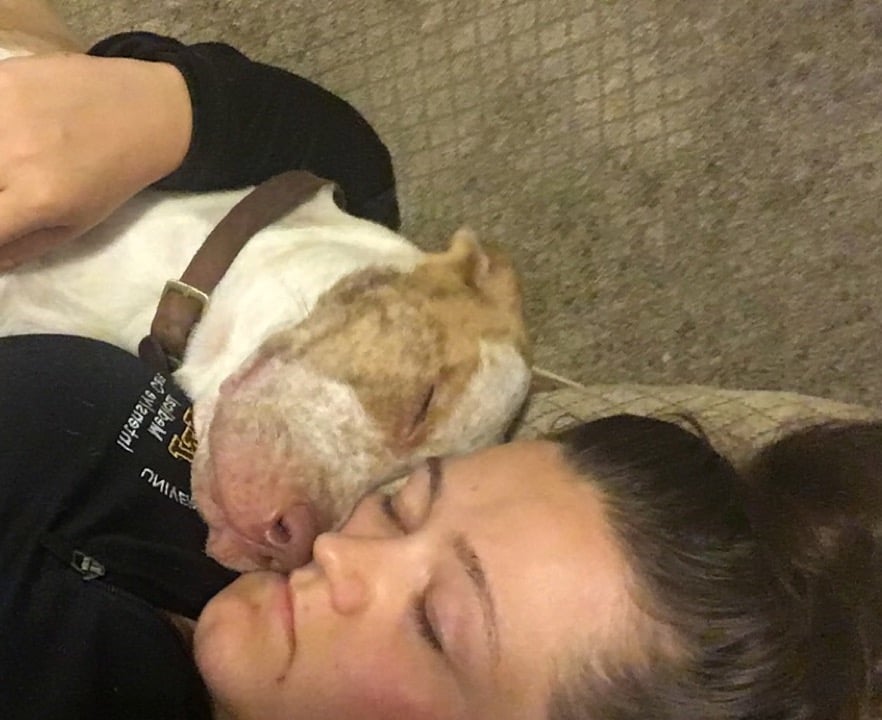
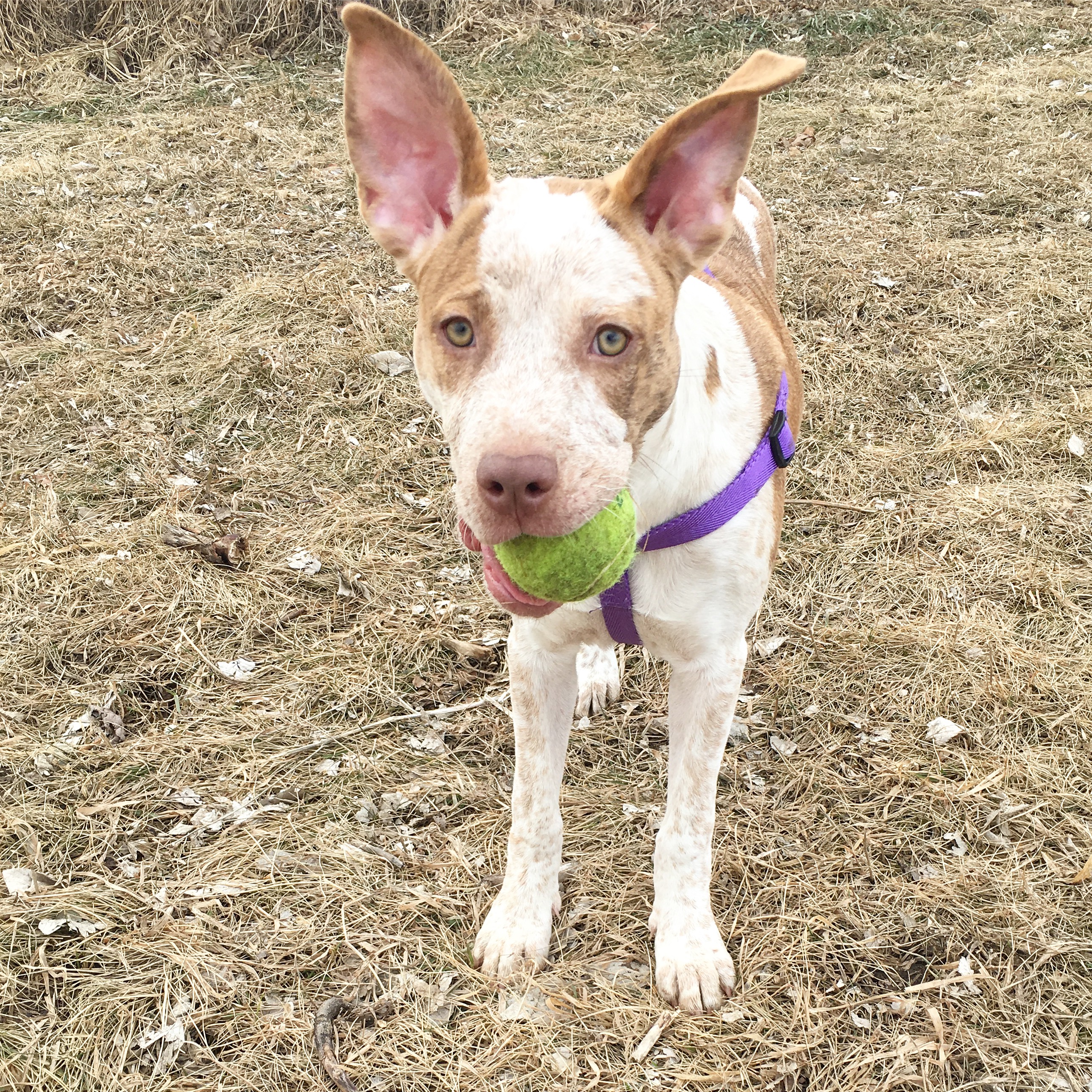


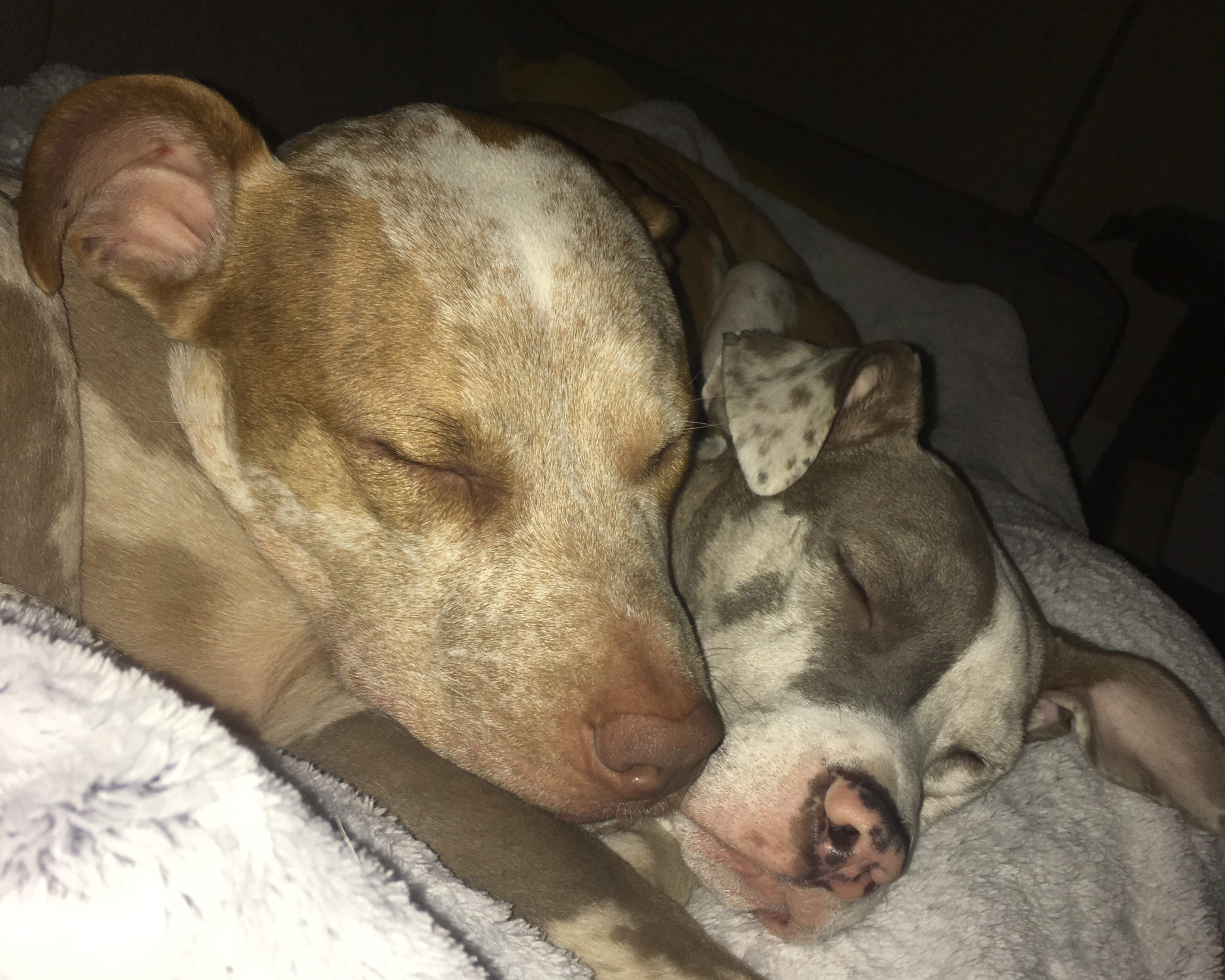
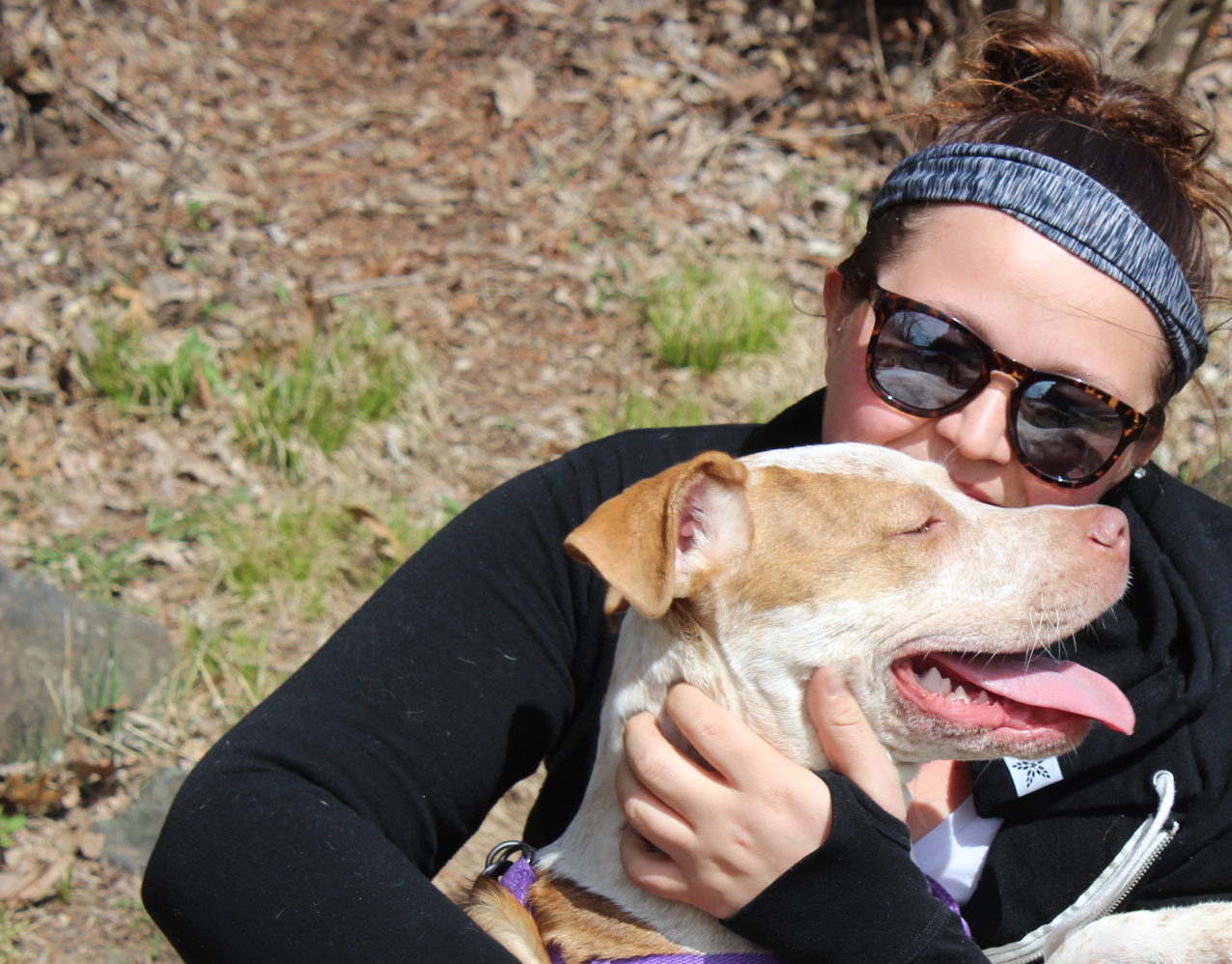

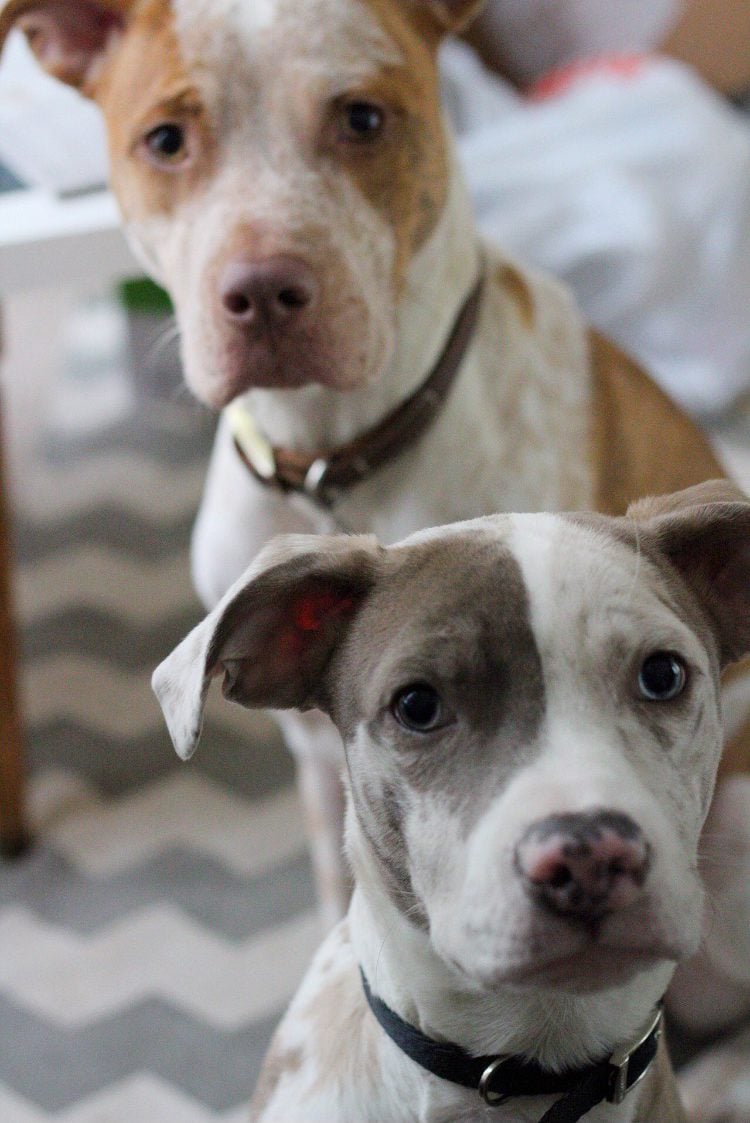
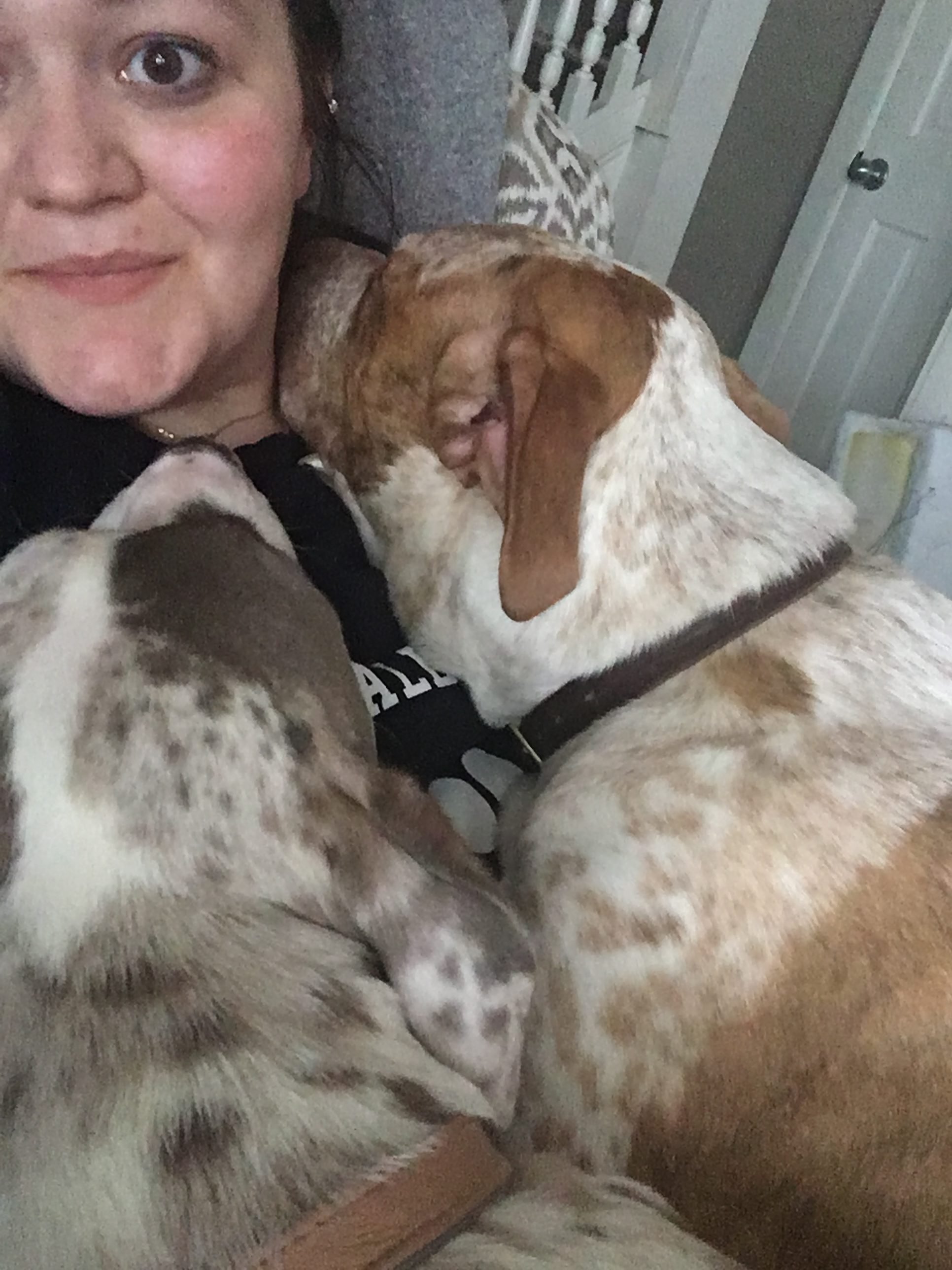

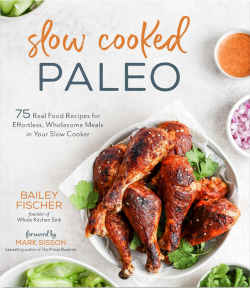

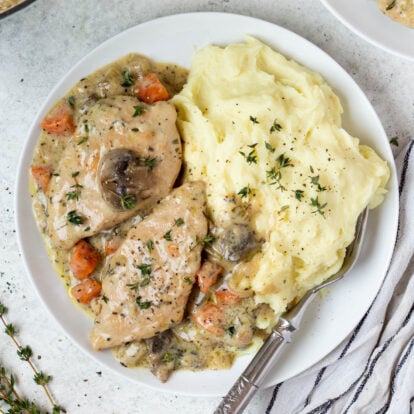





Tata says
Thank you for the article! Taking a dog into the house, we are responsible for it. I believe that everyone should study a lot of information about nutrition and maintenance before taking a pet. I suspected that there was a lot in dry food, but I didn’t expect the presence of cellulose. After Your article, there were no doubts about the possibility of feeding chicken and rice.
Cristin says
This post was EYE OPENING! I had NO idea this was going on! Now that I read all that, of course it is, if they are poisoning our food why not our pets? I found this post a few weeks ago and read it a few times. I did HOURS of research since then and we started our 3 dogs to a raw food diet last night. I am SO excited and so GRATEFUL to you Bailey for putting this post out there. I can’t wait to see all of the changes our pups will go through and all of the health benefits that they will now reap. THANK YOU!!!! <3
paleobailey says
Hi, Cristin! You are SO welcome, and I’m so happy to hear this. Your pups are lucky to have you, and I’m so thankful you came back to let me know!!
Susanne says
I agree with ALL of this! Dog food is the most horrible thing on the planet!
paleobailey says
I agree, the pet food industry is truly failing our pets :/
Kristin H says
First of all I want to say THANK YOU for choosing to adopt your fur babies! I volunteer with a local MN animal rescue and its awesome when I see people (especially ones that have a huge influence on others!) talking about adopting their fur babies and not getting them from a breeder (or breeding them themselves)!
Second of all, I’ve been on the fence on making my own dogs food for awhile now. I always thought to myself that I just don’t have enough time to do it or that its too hard and its just so convenient to just go buy a bag from the store. But with all the recalls lately (even on the “high quality” dog food, I’ve been thinking about it more and more. I still have a lot of research to do before I can fully switch, but this article is what is going to make me take the time to make it for them. They are my babies and they deserve the best! Epically when it comes to their health and nutrition!
Barbara Rivers says
Excellent post!! I switched my pups over to a balanced raw meat diet a little over 3 years ago, and it was one of the best decisions I have ever made in my capacity as a dog mom, right after my girl Missy was diagnosed with cancer. After all, I don’t eat processed food myself, so why feed it to my pups? It just doesn’t make sense.
Unfortunately, after having been in remission for 3 years, the cancer has come back and this time it has spread. My focus now lies on making sure her quality of life is high for as long as possible with the help of a homeopathic vet who also suggested supplementing her with a specific raw meat cancer support formula (by Darwin’s Natural Pet).
Alissa says
Great article! Thanks for posting! I have 3 dogs that I want to switch to a raw diet and the information you provided was very helpful!
Rachel says
Thanks for posting this. I have a colleague who raw-feeds his dogs exclusively, and those pups are super healthy. I thought it sounded weird at first, but I remembered all the digestive issues my previous dog suffered from, and it made sense. I will feed my next dog a raw diet.
Holly M says
This is great! We’ve been entertaining the idea of switching our sweet pit-mix to a raw diet to see if it will help with her allergies. This makes me want to dive on in! Will certainly be getting with our vet soon to discuss. Thank you!!